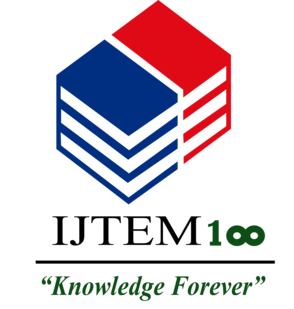IJTEM 2/1
World Economic Forum & its Organization, Membership & Activities

The World Economic Forum (WEF), based in Colony-Geneva, Switzerland, was founded in 1971 as a not-for-profit organization. It gained formal status in January 2015 under the Swiss Host-State Act, confirming the role of the Forum as an International Institution for Public-Private Cooperation. The Forum's mission is cited as "committed to improving the state of the world by engaging business, political, academic, and other leaders of society to shape global, regional, and industry agendas". .
IJTEM 2/1
An Overview on Organization for Economic Co-operation & Development

The Organization for Economic Co-operation and Development (OECD; French: Organization de co-operation ET de development economies, OCDE) is an intergovernmental economic organization with 36 member countries, founded in 1961 to stimulate economic progress and world trade. It is a forum of countries describing themselves as committed to democracy and the market economy, providing a platform to compare policy experiences, seeking answers to common problems, identify good practices and coordinate domestic and international policies of its members. Most OECD members are high-income economies with a very high Human Development Index (HDI) and are regarded as developed countries. As of 2017, the OECD member states collectively comprised 62. 2% of global nominal GDP (US$49.
IJTEM 2/1
Production Possibility Frontier & its Relation to Other Costs

A production–possibility frontier (PPF) or production possibility curve (PPC) is a curve which shows various combinations of set of two goods which can be produced with the given resources and technology where the given resources are fully and efficiently utilized per unit time. One good can only be produced by diverting resources from other goods, and so by producing less of them. This tradeoff is usually considered for an economy, but also applies to each individual, household, and economic organization. .
IJTEM 2/1
Balance of Trade: Theories and Practices

The balance of trade, commercial balance, or net exports (sometimes symbolized as NX), is the difference between the monetary value of a nation's exports and imports over a certain period. Sometimes a distinction is made between a balance of trade for goods versus one for services. The balance of trade measures a flow of exports and imports over a given period of time. The notion of the balance of trade does not mean that exports and imports are "in balance" with each other. If a country exports a greater value than it imports, it has a trade surplus or positive trade balance, and conversely, if a country imports a greater value than it exports, it has a trade deficit or negative trade balance.
IJTEM 2/1
Measuring GDP and Economic Growth: An Economic Barometer

This essay based on Michaele Parkin, Macroeconomics, 8th edition. Gross domestic product (GDP) is a monetary measure of the market value of all the final goods and services produced in a period of time, often annually. GDP (nominal) per capita does not, however, reflect differences in the cost of living and the inflation rates of the countries; therefore, using a basis of GDP per capita at purchasing power parity (PPP) is arguably more useful when comparing differences in living standards between nations. .
